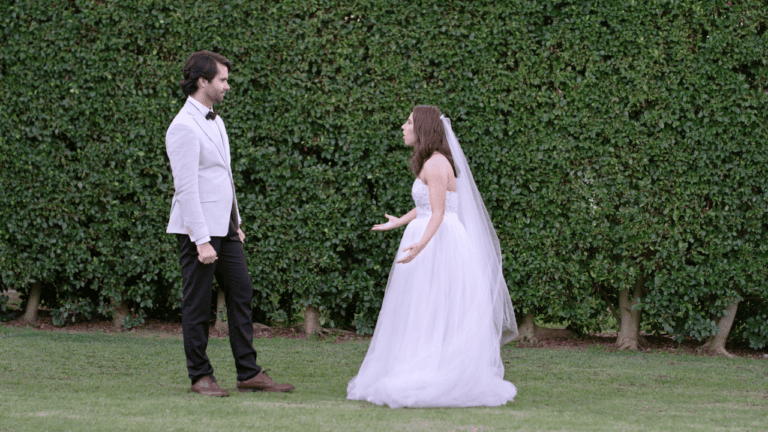How to fix a relationship after a breakup, when a relationship is broken, the pain and regret can feel overwhelming. Those trying to fix a relationship after a breakup face a tough journey. It’s not just about saying sorry or making big gestures. Relationship repair tips show that healing takes understanding and a real commitment to repairing a damaged relationship.
This means looking at the shared history and the pain caused. It’s about wanting to reconnect and move forward together.
Starting to mend a relationship means facing the memories and hopes you shared. It’s about healing from hurt with care. Empathy is key to this process. Without it, fixing things might not feel real, leaving emotional scars open.
Empathy creates a space where trust can grow again. It’s the foundation for a new start in your relationship.
Key Takeaways
- How to fix a relationship after a breakup, Understanding and applying empathy is critical for repairing a damaged relationship.
- Genuine remorse and a deep acknowledgment of one’s partner’s pain are vital steps in relationship repair tips.
- Cultivating emotional bonding and trust is a fundamental element in how to fix a relationship after a breakup.
- Perspective shifts and shared positive experiences contribute significantly to the journey of healing after a breakup.
- Continuous effort and professional guidance can greatly enhance the success of repairing love after a breakup.
- Personal growth, empathy, and a strong support system are indispensable assets for relationship longevity and happiness.
Understanding the Impact of Attachment Injuries in Relationships
Attachment injuries can deeply hurt, changing how we connect with others and ourselves. These injuries often come from big trust breaks, like cheating or being ignored. Knowing how attachment styles affect us is key to healing.
The Role of Empathy and Kindness in Healing
Empathy and kindness are vital for healing from attachment injuries. They make us feel heard and understood by our partners. This is crucial for rebuilding trust after a breakup. Showing empathy first can help close the emotional gaps left by the injury.
Recognizing the Importance of Emotional Bonding
Rebuilding intimacy after a breakup starts with reconnecting emotionally. Emotional bonding is more than physical attraction. It’s about creating a deep connection that strengthens a relationship. Compassionate interactions and understanding can bring couples closer, leading to a stronger bond.
Addressing Betrayals and Rebuilding Trust After a Breakup
Betrayal can shake the trust in a relationship. To reconcile, it’s important to talk openly about the betrayal. Steps to reconcile after a breakup include discussing the betrayal’s causes and effects. This step is crucial for healing and rebuilding trust.
- “Attachment injuries cut deep, altering the way we see trust and connection in our relationships.”
- “Healing begins with understanding how attachment styles shape our reactions to betrayal.”
- “Empathy is the glue that mends broken trust and strengthens emotional bonds.”
- “Kindness isn’t just a virtue—it’s a bridge toward healing attachment injuries.”
- “When trust is shattered, honest conversations lay the foundation for repair.”
- “Emotional bonding is the heart of intimacy, anchoring us to those we love.”
- “Forgiveness grows in the soil of understanding and open dialogue.”
- “Betrayal is a storm, but healing is possible when both partners commit to rebuilding.”
- “Empathy makes the wounded feel heard, creating space for reconciliation.”
- “Rebuilding trust requires consistent actions that align with words.”
- “Acknowledging pain is the first step in healing from attachment injuries.”
- “Healing after a betrayal demands patience, compassion, and shared effort.”
- “Emotional gaps can be closed with intentional acts of kindness and understanding.”
- “Reconnecting after a breakup starts with emotional vulnerability.”
- “To rebuild intimacy, focus on creating safe spaces for honest dialogue.”
- “The scars of betrayal can fade with time and committed care.”
- “Listening without judgment fosters healing and trust in fractured relationships.”
- “Rebuilding intimacy requires nurturing emotional and physical connections.”
- “Understanding the impact of betrayal helps us navigate the path toward forgiveness.”
- “Empathy transforms blame into a shared journey of healing.”
- “Attachment injuries can be a turning point for growth if approached with care.”
- “Healing together is possible when both partners show willingness to change.”
- “Kindness is a quiet but powerful force in rebuilding broken bonds.”
- “Trust can be rebuilt one small, consistent action at a time.”
- “Recognizing each other’s pain fosters mutual understanding and healing.”
- “Empathy is the antidote to the isolation caused by attachment injuries.”
- “The journey to healing begins with honest acknowledgment of the pain caused.”
- “Rebuilding trust means showing up, again and again, with integrity and care.”
- “Compassion creates a fertile ground for love to regrow after betrayal.”
- “Attachment injuries challenge us to deepen our understanding of ourselves and others.”
- “Listening to your partner’s pain without defensiveness paves the way for healing.”
- “True intimacy grows when emotional wounds are addressed, not ignored.”
- “The road to reconciliation is paved with accountability and consistent effort.”
- “Healing requires both partners to feel safe sharing their feelings.”
- “Broken trust can be rebuilt when both partners are willing to confront the hard truths.”
- “Empathy allows us to hold space for each other’s pain and healing.”
- “Forgiveness is not forgetting but understanding and moving forward together.”
- “Emotional reconnection starts with small acts of care and tenderness.”
- “Betrayal creates distance, but empathy bridges the gap.”
- “Patience is the cornerstone of rebuilding trust after a breakup.”
- “Compassionate interactions soften the edges of pain caused by attachment injuries.”
- “When betrayal strikes, consistent honesty is the first step to recovery.”
- “Healing isn’t linear—it’s a series of small, intentional steps toward connection.”
- “Understanding each other’s attachment styles can prevent future injuries.”
- “Kindness in difficult moments shows commitment to repairing the relationship.”
- “Rebuilding intimacy is about emotional safety, not just physical closeness.”
- “Acknowledging the hurt creates a path for mutual understanding and healing.”
- “The scars of betrayal remind us of our resilience and capacity to heal.”
- “To move forward, both partners must take responsibility for their roles.”
- “Healing from attachment injuries strengthens the foundation of a lasting relationship.
Fixing a relationship after a betrayal is hard but doable. Healing takes time, patience, and effort from both sides. With empathy, understanding, and consistent communication, relationships can heal and regain their balance.
The Art of Crafting a Sincere Apology Letter
In the delicate world of communication in a post-breakup relationship, a sincere apology letter is key. It shows you truly regret what happened. A genuine apology heals emotional wounds and opens the door to fixing things.
A good apology is clear and heartfelt. It should not sound defensive or blaming. Words like “obviously” and “sorry if” can make your apology seem fake. Instead, be direct, acknowledge the hurt, and show you want to make things right. Learn more about effective apologies here.
Writing a good apology involves several steps. First, admit your mistake. Then, understand how it made the other person feel. Next, suggest how you can move forward together. Always end with hope for the future. For more tips on writing a heartfelt apology, check here.
Studies show that keeping in touch can really help fix a broken relationship. Writing letters regularly can make a big difference. It’s not just about saying sorry; it’s about showing you’re committed to keeping the lines of communication open.
- “A heartfelt apology is a bridge between hurt and healing.”
- “Sincerity is the soul of an apology—let your words reflect your remorse.”
- “An apology isn’t just about saying ‘sorry’; it’s about acknowledging the pain you’ve caused.”
- “The best apologies are direct, genuine, and free of excuses.”
- “Taking responsibility in an apology shows maturity and respect.”
- “Empathy transforms an apology into a meaningful gesture of connection.”
- “A sincere apology speaks volumes about your willingness to make things right.”
- “Acknowledging the hurt you caused is the first step toward rebuilding trust.”
- “Avoiding defensive language in an apology shows true accountability.”
- “Real remorse opens the door to reconciliation.”
- “An apology without empathy is like a bridge without foundation.”
- “Taking responsibility shows you care about the relationship, not just the outcome.”
- “Every apology is an opportunity to heal, grow, and strengthen the bond.”
- “A genuine apology focuses on understanding, not justification.”
- “Empathy allows you to connect with the feelings of the person you’ve hurt.”
- “When apologizing, it’s not about being right—it’s about being kind.”
- “A good apology shows you’re willing to learn and grow from your mistakes.”
- “Words of regret mean little without actions that reflect change.”
- “A true apology acknowledges pain without minimizing it.”
- “Honesty and vulnerability make apologies meaningful and impactful.”
- “Resolution begins when you take responsibility for the hurt you’ve caused.”
- “Apologizing isn’t weakness—it’s courage in action.”
- “Empathy in an apology lets the other person feel seen and heard.”
- “Healing begins with acknowledging how your actions affected the other person.”
- “A well-crafted apology shows respect for the other person’s feelings and time.”
- “Commitment to change is the cornerstone of a sincere apology.”
- “Avoiding blame in your apology shows emotional maturity.”
- “A strong apology is rooted in honesty, responsibility, and hope.”
- “Every sincere apology is a step toward mending what’s broken.”
- “A genuine apology conveys not just regret but also the desire to do better.”
- “Recognizing the other person’s pain makes your apology more meaningful.”
- “An apology is an offering of peace, not a demand for forgiveness.”
- “Letting go of defensiveness allows your apology to reach the other person’s heart.”
- “The best apologies include empathy, responsibility, and a plan for change.”
- “An apology is a promise to grow, not just a statement of regret.”
- “Patience shows respect for the time the other person needs to heal.”
- “A true apology values the relationship over the ego.”
- “Resolution comes when apologies are paired with consistent action.”
- “An effective apology acknowledges pain, not just mistakes.”
- “Vulnerability in an apology fosters intimacy and trust.”
- “Listening is just as important as apologizing when trying to heal a relationship.”
- “Avoid phrases like ‘sorry if’—they weaken the sincerity of your apology.”
- “A strong apology builds a foundation for a healthier future together.”
- “Empathy in an apology shows you value the other person’s feelings.”
- “An apology creates a moment of connection, even in the aftermath of hurt.”
- “Taking ownership of your actions makes your apology more credible.”
- “The power of an apology lies in its ability to repair emotional wounds.”
- “Hope for a better future is an essential element of any meaningful apology.”
- “A heartfelt apology reflects not only regret but also respect for the other person.”
- “Rebuilding trust starts with a sincere apology that acknowledges the pain caused.”
“A sincere and well-delivered apology can not only mend broken bonds but also set the foundation for a stronger, more resilient relationship in the future.”
Being patient is important when trying to fix a relationship. An apology doesn’t mean you should expect forgiveness right away. It gives the other person time to heal at their own pace. This shows you respect their feelings and care about their healing, which can lead to a stronger relationship in the long run.
How to Fix a Relationship After a Breakup Actions Beyond Apologies
Fixing a broken relationship takes more than just saying sorry. It means making real changes that last. This journey is about changing how you act, showing you really want to be together again.
Identifying Behaviors that Rebuild Intimacy Post-Breakup
Building intimacy again isn’t about big speeches. It’s about small, steady actions that show you care. Taking full blame for your actions is key. It helps you understand and feel for each other better.
- “Healing a relationship requires actions that prove your love, not just words that express it.”
- “True change begins when you prioritize consistent effort over grand gestures.”
- “Small acts of care rebuild intimacy more effectively than sweeping declarations.”
- “Real connection is fostered through everyday moments of kindness and understanding.”
- “Lasting reconciliation is built on mutual accountability and respect.”
- “A broken relationship can only mend when both partners are willing to grow together.”
- “Apologies open the door, but actions rebuild the foundation.”
- “Consistent effort is the language of love that speaks louder than apologies.”
- “Rebuilding trust requires time, patience, and unwavering commitment to change.”
- “Vulnerability is the bridge to authentic communication and renewed connection.”
- “Small, thoughtful actions restore intimacy in ways that words cannot.”
- “Trust grows when past mistakes are acknowledged and not repeated.”
- “Healing starts with taking responsibility and ends with creating a better future together.”
- “Authentic communication is the cornerstone of a healthy and thriving relationship.”
- “Reconciliation isn’t about fixing the past but building a stronger future.”
- “Lasting love is rooted in consistency, compassion, and intentional actions.”
- “True intimacy is nurtured through shared experiences and emotional openness.”
- “Listening deeply is as vital as speaking openly in repairing a broken bond.”
- “Respecting each other’s healing process is key to moving forward together.”
- “The journey to reconciliation is paved with empathy and mutual understanding.”
- “A relationship thrives when both partners embrace vulnerability without fear.”
- “Learning from past mistakes turns pain into a foundation for growth.”
- “True reconciliation requires daily acts of love and unwavering commitment.”
- “Patience and empathy heal wounds that time alone cannot.”
- “Genuine apologies are the seeds, but meaningful actions are the roots of repair.”
- “Change is the most powerful apology you can offer.”
- “Rebuilding trust starts with transparency and ends with consistency.”
- “Forgiveness and growth are the pillars of a mended relationship.”
- “Fixing a relationship isn’t about perfection; it’s about progress and effort.”
- “Love grows deeper when both partners commit to open, honest communication.”
- “Resentment fades when replaced with understanding and shared vulnerability.”
- “Embracing your partner’s needs strengthens the bond after a breakup.”
- “True love withstands the storms of regret when nurtured with compassion.”
- “Repairing a relationship means focusing on solutions, not just apologies.”
- “Building a stronger connection starts with appreciating the lessons of the past.”
- “Daily moments of care are the unsung heroes of healing relationships.”
- “Empathy allows you to see the pain through your partner’s eyes.”
- “Growth requires courage: courage to admit mistakes and courage to move forward.”
- “Small, consistent actions show your partner they can trust you again.”
- “Authenticity in communication fosters the emotional safety necessary for healing.”
- “Progress happens when both partners work as a team to rebuild what was lost.”
- “Apologies are the beginning; commitment to change is the journey.”
- “Fixing a relationship is an investment in love, time, and understanding.”
- “Shared vulnerability creates a bond that strengthens even after a breakup.”
- “A healthy relationship grows from mutual effort, not just individual desires.”
- “Focus on actions that align with your words to rebuild trust.”
- “Forgiveness thrives in an environment of honesty and emotional safety.”
- “True intimacy is rediscovered when both partners feel heard and valued.”
- “Healing a broken bond requires showing up for your partner every single day.”
- “The strongest relationships are forged in the commitment to grow together, even after hardship.”
Apologizing truly and clearing up old resentments helps a lot. Also, trying new things together can bring back the connection lost in sadness.
Moving from Grand Gestures to Sustainable Changes
While big surprises or expensive gifts might seem like a fix, real fixes are deeper. Actions like talking every day, spending time together, and setting goals together are crucial. Learning from past mistakes and not repeating them is also key to trust and understanding.
Embracing Vulnerability and Authentic Communication
Being open is essential for healing and improving a relationship. This openness lets both partners share their real feelings without fear. It’s important to respect and value each other, which can be helped by professional advice from relationship experts.
Using positive affirmations and seeking advice from experts like Contact Experts can also help. With patience, empathy, and hard work, you can move past old hurts and start anew.
Rebuilding a Broken Relationship Through Continuous Effort
Fixing a broken relationship is not about big gestures. It’s a journey that needs steady, patient work. Knowing the steps to reconcile after a breakup is key. It starts with admitting the harm and truly wanting to fix things.
The way to heal after a breakup is slow, empathetic, and requires both people to want to move forward. These qualities are vital for fixing and growing the relationship.
Having a clear plan can really help. Here are some steps to keep working on it:
- “Rebuilding a broken relationship is a marathon, not a sprint—steady progress matters most.”
- “Healing after a breakup begins with honest conversations and shared understanding.”
- “True growth in a relationship comes from addressing the pain, not avoiding it.”
- “Small, consistent acts of love build a stronger foundation than any grand gesture.”
- “Forgiveness and patience are the cornerstones of reconciliation.”
- “Open communication is the first step in rebuilding what was broken.”
- “Growth in a relationship happens when both partners commit to continuous effort.”
- “Acknowledging past hurt paves the way for healing and renewed trust.”
- “Every small step toward reconnection strengthens the bond between two hearts.”
- “Rebuilding trust requires vulnerability and a willingness to try again.”
- “Love thrives when partners choose each other every single day, even after hardship.”
- “Actions rooted in empathy and understanding restore lost connection.”
- “Healing takes time, but every moment spent working together brings hope.”
- “Appreciation for each other’s efforts fuels the journey to reconciliation.”
- “Shared activities help rebuild intimacy and create new memories to cherish.”
- “Patience is the unsung hero of rebuilding a broken relationship.”
- “A sincere apology paired with meaningful change heals deep wounds.”
- “Trust is rebuilt not in a single moment, but through consistent, loving actions.”
- “Healing after a breakup requires both people to meet each other halfway.”
- “Commitment to change is the ultimate expression of love after hurt.”
- “Empathy is the bridge that connects two hearts on the path to healing.”
- “The strongest relationships are built on the courage to start again.”
- “A clear plan and open hearts create a roadmap to relationship recovery.”
- “True closeness grows when both partners feel safe to express their emotions.”
- “Reconciliation is a dance of vulnerability, patience, and forgiveness.”
- “Setting realistic goals honors the complexity of healing after a breakup.”
- “Consistency in love is the most powerful way to restore broken trust.”
- “Acknowledging each other’s pain opens the door to deeper understanding.”
- “Healing together means embracing the ups and downs with grace.”
- “Celebrating small victories strengthens the bond during the healing process.”
- “Kindness and gratitude rekindle the spark in a broken relationship.”
- “Doing activities you both enjoy brings joy and connection back into the relationship.”
- “A willingness to listen can mend the deepest emotional wounds.”
- “Every act of love and care is a step toward rebuilding what was lost.”
- “Healing a relationship is about effort, not perfection.”
- “The journey to reconciliation begins with a shared desire to move forward.”
- “Honoring each other’s healing pace fosters mutual respect and patience.”
- “Forgiveness grows in a space of honesty and heartfelt effort.”
- “Learning from past mistakes strengthens the foundation of a renewed relationship.”
- “Love is restored when both partners prioritize healing over resentment.”
- “Consistency in showing up for each other rebuilds faith in the relationship.”
- “The courage to face unresolved pain is the first step to true healing.”
- “Small gestures of love remind your partner that they are cherished and valued.”
- “True connection is nurtured through open dialogue and shared vulnerability.”
- “Rebuilding after a breakup requires both partners to let go of blame and embrace growth.”
- “Professional guidance can provide tools to navigate complex emotions and rebuild trust.”
- “Healing together means being present and attentive to each other’s needs.”
- “Every effort made in love brings you one step closer to renewed intimacy.”
- “Love flourishes in an environment of mutual commitment and emotional safety.”
- “Rebuilding a relationship is a journey of rediscovery, resilience, and hope.”
Remember, healing is not quick. Every small step you take together can help fix your relationship. Start this journey with an open heart and a willingness to forgive. Every effort you make is important in bringing back the lost closeness.
Conclusion
How to fix a relationship after a breakup, Fixing a broken relationship takes a deep understanding of its strength and weakness. It’s about feeling our partner’s pain and responding with care. Repairing a relationship is not just about sending messages. It’s about making a lasting commitment to grow together.
After a breakup, people feel many emotions. They might feel sad, confused, or relieved. It’s a personal journey filled with ups and downs.
Some people face low self-esteem or depression after a breakup. They might deny the end of the relationship or feel angry. But with time, patience, and grief, they can move towards acceptance and new beginnings.
Breakups are common, and each one teaches us something new. People often go through many breakups, learning about trust and self-worth. They seek love and forgiveness, even when it’s hard.
These experiences help us grow, even if it’s hard to see at first. We learn to value ourselves and what we want in a relationship. This growth is shown in heartfelt letters and the choices we make.
Ending a relationship is a chance to start anew. It’s important to acknowledge our feelings and set new goals. We must also decide how to move forward with an ex, whether as friends or with closure.
Trust can be rebuilt with effort and care. This can lead to a stronger connection or a respectful end. Looking into our own stories and experiences helps us grow and strengthen our relationships.





















